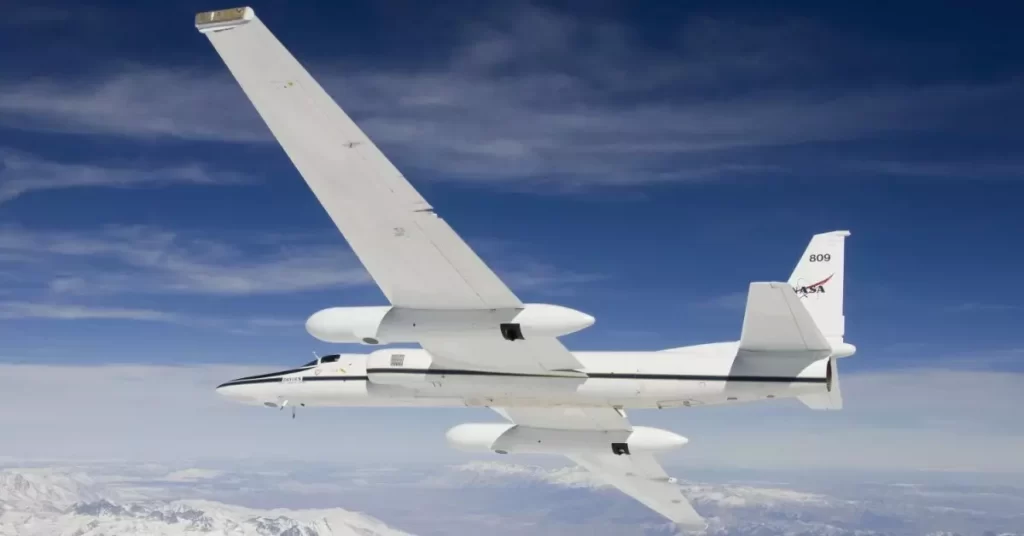NASA’s Electrifying Quest: Flying Into Thunderstorms Unveils Lightning’s Secrets!
In a bold and pioneering endeavor, NASA recently embarked on a mission that pushed the boundaries of atmospheric science. Traditional lightning research has been conducted either by low-flying aircraft or from the distant vantage point of ground-based observers, leaving a significant gap in our understanding of the intricate dynamics of thunderstorms. Conversely, the agency’s fleet of satellites, including those with advanced imaging sensors like the one aboard the International Space Station, offered a broader perspective but lacked the proximity needed for detailed examination.
Enter NASA’s ER-2 aircraft, a high-flying marvel that soars above the rest as the apex of the agency’s Airborne Science Program. This aircraft, equipped with cutting-edge instrumentation and flown by seasoned pilots, was uniquely positioned to pierce the heart of thunderstorms. Over the course of a month-long mission, it logged an impressive 60 hours of flight time, providing unprecedented access to the inner workings of thunderstorms. These invaluable observations held the promise of transforming our ability to predict and understand severe weather events.
Principal investigator Nikolai Ostgaard, representing the University of Bergen, encapsulated the mission’s essence: a quest to unravel the intricate microphysics of the colossal electric fields enveloping our skies.
To contextualize the importance of this research, consider the prevalence of lightning strikes in the United States, where approximately 40 million lightning strikes touch the ground annually. While the odds of an individual being struck by lightning in a given year are minuscule, lightning remains a substantial contributor to storm-related fatalities. Over the past thirty years, the United States has witnessed an average of 43 lightning-related fatalities each year, according to the National Weather Service. Lightning strikes can result in cardiac arrest, which, if not promptly addressed, can lead to irreversible brain damage in survivors, as highlighted by the weather service.
One of the pivotal aspects of this groundbreaking experiment centered on the investigation of gamma-ray radiation emitted by thunderstorms. Thunderstorms produce two distinct types of gamma-ray radiation: terrestrial gamma-ray flashes and gamma-ray glows. While the former are brief but intense bursts of radiation originating from specific points within the thundercloud, the latter endure for extended periods, ranging from minutes to hours. The mission brought together an international coalition of scientists from the University of Bergen, the U.S. Naval Research Laboratory, and several NASA centers to conduct comprehensive research.
This ambitious undertaking, dubbed the ALOFT project (Airborne Lightning Observatory for Fly’s Eye Simulator and Terrestrial Gamma Rays), unfolded in strategic thunderstorm hotspots encompassing Central America, the Caribbean, and the coastal regions of Florida. The ER-2 aircraft, designed to operate at altitudes of approximately 60,000 feet, was equipped with specialized instruments meticulously engineered to measure the intensity of gamma-ray emissions. It executed daring flights that brought it perilously close to thunderclouds towering as high as ten miles.
The real-time transmission of data to the ground team enabled swift responses and strategic flight maneuvers. Whenever electrically charged thunderclouds emitting gamma rays were detected, the ground team directed the aircraft to orbit and traverse these remarkable natural phenomena. The result was an unparalleled wealth of data, shedding light on terrestrial gamma-ray flashes and unveiling the behavior of gamma-ray glows within thunderclouds.
To put it plainly, the data collected in this mission holds the potential to revolutionize our understanding of storm dynamics. Timothy Lang, the lead research aerospace technologist at NASA’s Marshall Space Flight Center, conveyed the significance of this data by highlighting its capacity to enable scientists to identify when storms are intensifying. This newfound knowledge provides essential lead time and information crucial for safeguarding the public from lightning-related threats.
The aircraft at the center of this groundbreaking research, the Lockheed ER-2, serves as one of NASA’s invaluable “flying laboratories.” These aircraft, procured in the early 1980s, replaced aging U-2 aircraft and have since conducted more than 4,500 data missions and test flights. Originally designed for diverse scientific missions, they have evolved into indispensable assets in the realm of weather research.
Nikolai Ostgaard, reflecting on the mission’s magnitude, emphasized its potential to unlock the secrets of lightning and its intricate relationship with gamma-ray flashes and glows within thunderclouds. NASA’s unwavering commitment to pushing the boundaries of scientific exploration continues to expand our comprehension of the natural world, equipping us with the knowledge needed to predict and mitigate the impact of severe weather events. This mission stands as a testament to the agency’s dedication to advancing our understanding of the Earth’s complex atmospheric processes.



